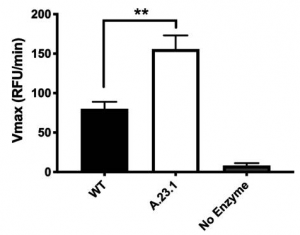A group of Cornell University, USA, has reported the effect of P681R mutation on the furin cleavage site of SARS-CoV-2.
https://www.ncbi.nlm.nih.gov/pmc/articles/PMC8259907/
The A.23.1 variant has the following Spike mutations: F157L, V367F, Q613H, R102I, L141F, E484K, and P681R. Authors focused on the P681R point mutation, and found that the acquisition of the P618R mutation significantly increase cleavability by furin, with increases beyond that seen for WT as shown below.
To date, the most prevalent SARS-CoV-2 variant has been B.1.1.7. This variant is characterized by a P681H mutation in the spike S1/S2 “furin cleavage site” and has been linked to increased transmissibility due to the presence of the additional basic amino acid, histidine (H). Most recently, a new variant B.1.617.2 has replaced B.1.1.7 as the dominant circulating virus globally, which has a P681R point mutation, and is more conventionally “polybasic” in the S1/S2 cleavage motif and suggested to enhance transmissibility and pathogenesis.
The A.23.1 variant pre-dated B.1.617 contains P681R mutation as mentioned above, and emerged in Uganda beginning in October 2020, to become the dominant virus in the country (89% prevalence on January 12th 2021). However, during the late spring of 2021, A.23.1 became extinct (1% prevalence on May 5th 2021), being replaced by other variants B.1.351 and B.1.525 (without P681R), and increasingly B.1.617.2—which contains P681R.
Overall, this suggests that while the P681R point mutation is important for furin-mediated cleavage, it is not the primary driver of virus transmissibility.

